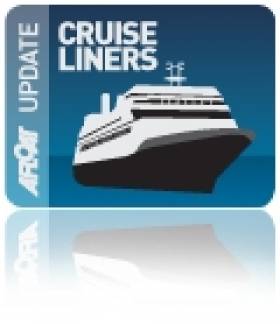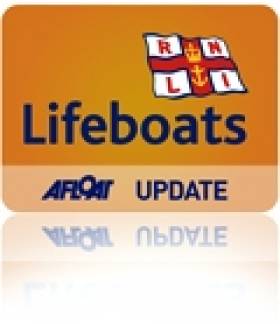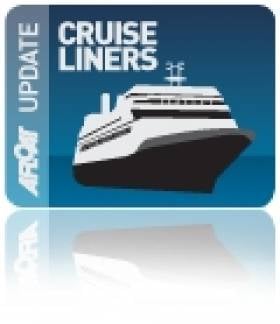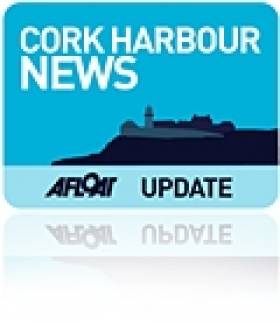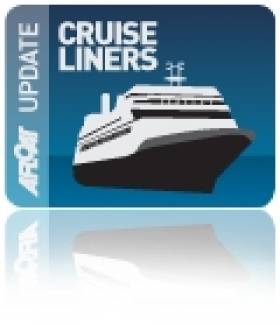Displaying items by tag: Cobh
Historic Trophy for South Pacific Dream Cruise
Fergus and Kay Quinlan live in the Burren in County Clare, and in 1997 they launched the steel van de Stadt 12-metre cruiser Pylades, which they'd built themselves. They've made several voyages and have been in the Irish Cruising Club's award list before. But at the ICC's AGM in the National YC on February 18th they deservedly got the big one, the Faulkner Cup, for the first stage of a global circumnavigation which began from their home port of Kinvara in the summer of 2009, and a year later they'd reached Tahiti.
Their cruise continues, so the award was made in absentia. Adjudicator Brian Cudmore of Cork made the point that their informative log included much general and often entertaining information, and it becomes even more interesting the further you got into it, so he's keenly anticipating the next inmstalment.
The Strangford Cup for an alternative best cruise could not have been more different, both in location or boat type. The 44ft Young Larry may have been built of steel in 1995, but she was based fairly precisely on the design of a gaff cutter built in 1907. And though the rig has been made more manageable through being a yawl, even the mizzen is gaff-headed, while the main sets a topsail. Not the most-easily handled rig for challenging seas, you might well think, but Maire Breathnach (originally from Dungarvan) and her partner Andrew Wilkes, crewed by Maire's niece Sibeal Turraoin, took Larry Og – which looks for all the world like a smaller Asgard I – right through the Northwest Passage to Alaska, an extraordinary one-season achievement.
The ICC members logged some other notable Atlantic voyages, with Michael Coleman of Cobh, a Port of Cork Pilot before he got the free bus pass, making a fine Atlantic triangle to the Azores, then Newfoundland, and so home to Cork, visiting many islands with his well-found 1988 Oyster 53 Oyster Cove. It was all done with a crew of average age 66, senior member Tom Noonan aged 76, and worthy winners of the Atlantic Trophy.
Over the years since its foundation in 1929, the Irish Cruising Club has become the trustee and adjudicator of many trophies, twenty in all, and two of them were special presentations in 2010. The Donegan Memorial Trophy went to Ruth Heard, an ICC member since 1967. She has cruised both to the Azores and Iceland, but is honoured this year in celebration of her remarkable contribution to the rebirth of the inland waterways, and to mark the re-opening of the Royal Canal. Ruth Heard was on the crew of Harklow, the last boat to transit the Royal in 1954 before its half century of official closure which was gloriously reversed in 2010.
And once upon a time, the ICC was the organiser of Ireland's Admiral's Cup campaigns. Though many members still race offshore as individuals, the club has long since focused totally on cruising. But it has a general trophy, the John B Kearney Cup for Services to Irish Sailing, and for 2010 it was awarded with acclamation to the successful Irish Commodore's Cup Team.
- Faulkner
- Cruise
- Cruising
- Cup
- Club
- Quinlan
- Kay
- Fergus
- ICC
- National
- yacht
- cub
- YC
- Cudmore
- Cork
- Breathnach
- Alaska
- Asgard I
- Strangford
- Burren
- Pylades
- Northwest
- Passage
- Wilkes
- Sibeal Turraoin
- Coleman
- Atlantic
- Cobh
- Newfoundland
- Oyster Cove
- Oyster
- Donegan
- trophy
- Ruth Heard
- John B Kearney
- Cup
- Commodore's
- gaff
SCORA Meet to Discuss the State of South Coast Sailing
The 2010 Annual General Meeting and Prizegiving of the South Coast Offshore Cruising Association (SCORA) will take place at Kinsale Yacht Club on Friday December 3rd at 8pm.
Hugh Mockler of HM Yachts will present the League prizes for the eighteen race series that included the Kinsale April league and the Royal Cork Autumn League.
Des Mc William of McWilliam One Sails will present the championship prizes for the series that was sailed in Cobh in September.
The SCORA Committee will present a series of sailing action photographs from the various events covered by Sailing Photographer Bob Bateman during the season.
The meeting will discuss the state of sailing on the South Coast and the ongoing development of the Echo progressive handicap system, together with the possible movement of class bands.
At the close of the sailing season an interesting evening is assured so all sailors are urged to attend and avail of the opportunity to air their views on the handicap system and the class bands.
Over 100,000 Cruise Passengers Visit Port of Cork in 2010
2010 proved to be another busy year for the Port of Cork with a total of 52 cruise liners calling to Cobh, Ireland's only dedicated cruise berth.
Onboard the 52 cruise liners were a total of 100, 414 passengers and crew, a record number to visit Cork.
Following the Port of Cork's investment in Cobh's dedicated cruise berth over the last five years, some of the largest liners in the world are now capable of berthing, bringing with them thousands of passengers and crew, all of whom contribute to the local economy. With a ambitious target to grow the cruise business even further, the Port of Cork are aiming to increase the number of cruise liner calls over the next five years to seventy-five.
Speaking at a recent Port of Cork cruise seminar entitled Achievement of growth in the cruise business in Cork, Captain Michael McCarthy, Port of Cork Commercial Manager said: 'We are keen to grow the business even more over the next five years. This will mean further investment of Cobh Cruise berth from the Port of Cork to handle even larger ships and to increase the number of current overnight stays.'
He continued: 'While the Port of Cork is committed to investment in this area we recognise that the region is the biggest benefactor from this business and we would therefore encourage the local authorities and organisations to support this investment.'
In a recent study carried out by UK cruise consultants, GP Wild, the on average spend per in-transit passenger is approximately €73 per day while in port. Captain McCarthy commented: 'With so many passengers arriving into Cobh and Cork, the impact that this has on the local economy is very positive.'
During the cruise seminar Captain McCarthy talked about Cork's potential as a cruise capital saying that: 'Feedback from cruise companies visiting Cork is very positive. Direct access to the quayside for passengers coupled with the accessibility of trains to Cork and the historic town of Cobh and its attractions on their doorstep, makes Cobh an attractive port of call. However tour operators and shore side attractions must all work together to offer passengers exciting full and half day tours, while also making it a memorable experience so that they may return.'
Also speaking at the Port of Cork cruise seminar was Clare Newman Port of Dover, Paul Ellerby UK Cruise Consultant and Aiden Pender Failte Ireland.
Since 1991 Port of Cork passenger and crew numbers have grown by nearly 85,000, highlighting the rapid growth of the sector which is predicated to continue. Cruise bookings for 2011 have already exceeded 2010 calls and potentially could be the busiest yet for the Port of Cork.
The 2011 Port of Cork cruise bookings list will be available at www.portofcork.ie at the end of January 2011.
Five Incidents in Four Days for Cork Harbour Lifeboat
Crosshaven Volunteer RNLI Lifeboat has had a very busy few days as they were tasked to five incidents in four days.
On Thursday evening at 17.59, the Lifeboat was tasked to the upper reaches of Cork Harbour near the city to check out an unidentifiable object in the water. On arrival, the object was found to be a large bag containing foam. Friday evening, saw the Lifeboat heading up the Owenabue River to rescue two punts which had been floated off on the very high Spring tides and were perceived a danger to shipping.
Saturday evening at 20.34, the Lifeboat was again tasked to the North side of Great Island where a 55' Motor Launch with 3 persons on board had mechanical difficulties and drifting in high winds of force 7. On arrival at scene, the crew decided that because of the size and weight of the vessel and the high winds it was safer to anchor the vessel and take off the crew. They were safely landed at East Ferry Pier. As the Lifeboat was returning to Crosshaven, The Coastguard at Valentia again tasked the Lifeboat to search the area between Cobh and Monkstown for an overdue Rigid Inflatable Boat (RIB). After searching for a period, and with nothing found, the Coastguard stood down the volunteer Lifeboat crew to return to station.
Sunday afternoon, and the pagers were again activated at 16.33 to go to the aid of a small boat with engine problems at East Ferry. On arrival in the area, it was noticed that the casualty boat had managed to restart and head into East Ferry Marina.
Related Safety posts
RNLI Lifeboats in Ireland
Safety News
Rescue News from RNLI Lifeboats in Ireland
Coast Guard News from Ireland
Water Safety News from Ireland
Marine Casualty Investigation Board News
Marine Warnings
Azura Cruise Liner Docks in Cobh for the First Time
In another first for Cork Harbour the 115,000 ton Azura cruise liner docked in Cobh last Friday.
After her maiden voyage in April, Azura spent summer based in Southampton cruising to the Mediterranean, the Baltic and the Canary Islands. She'll be sailing the Caribbean in winter from Barbados.
She holds 3,100 passengers based on double occupancy (3,574 when all the berths are full).
At 290 metres long and 36 metres wide she looked an impressive sight on the Cobh quayside as our photos show below.
P&O Cruise's Azura is the company's latest cruise liner. Built at the Monfalcone shipyard in Italy, the Azura is one of P&O's largest ships, boasting 14 public decks, 11 restaurants, five boutiques, four pools, two lounges and over 900 private balconies. It also features an outdoor cinema, a first for the company, along with an al fresco spa and single staterooms.

Above and below: two views of the new Azura berthed in Cobh last Friday. Photo: Bob Bateman

Cork Harbour Town Welcomes Over One Million Visitors
Minister for Enterprise, Trade and Innovation Batt O'Keefe TD told Cobh and Harbour Chamber of Commerce last week that over one million visitors had come to Cobh in the past year and how the famous port had played a vital part in tourism for Cork harbour. Cobh is the deepwater port for visiting cruise liners and a centre of excellence for angling holidays. More from Cobh Edition HERE.
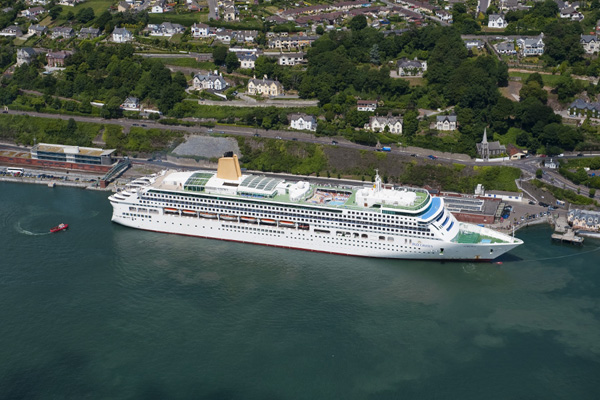
Independence of the Seas Departs Cobh
MV Independence of the Seas, is the largest cruise liner to visit an Irish port this year and Bob Bateman's photos show exactly the scale of the huge liner departing Cobh this evening.
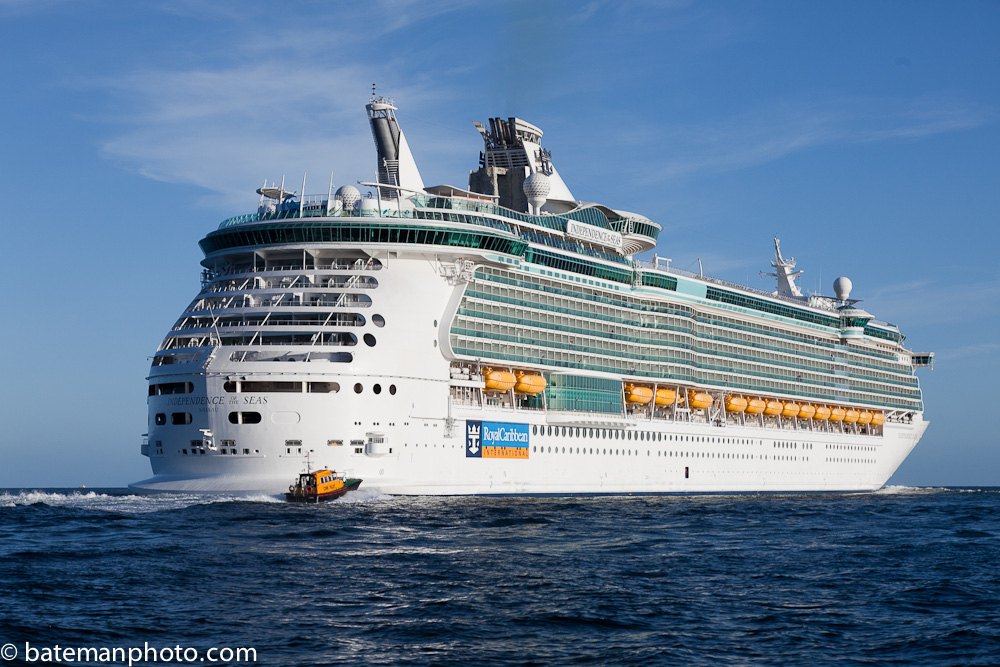

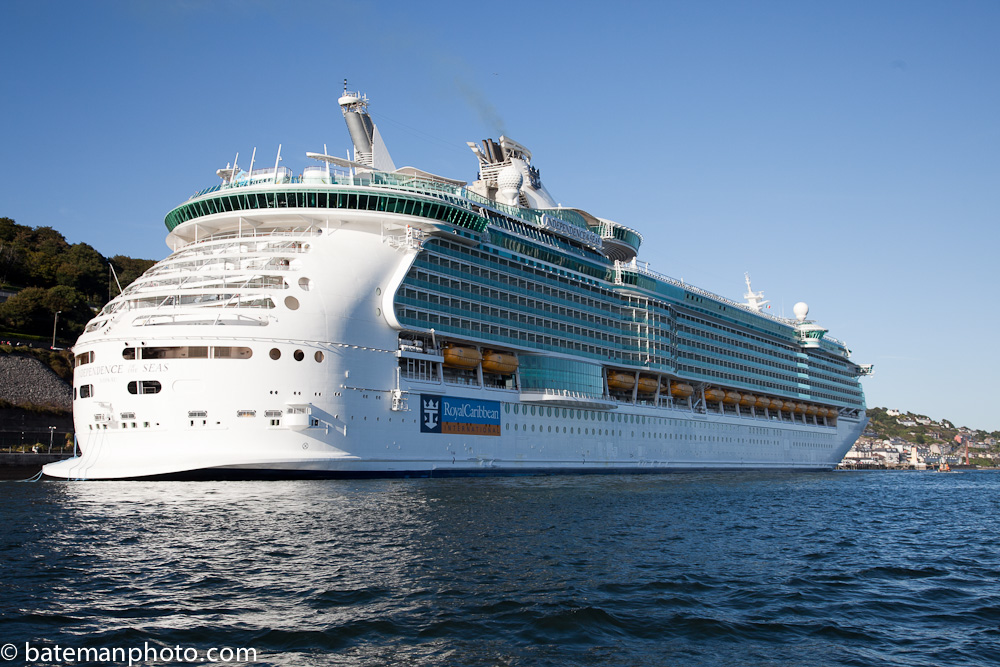
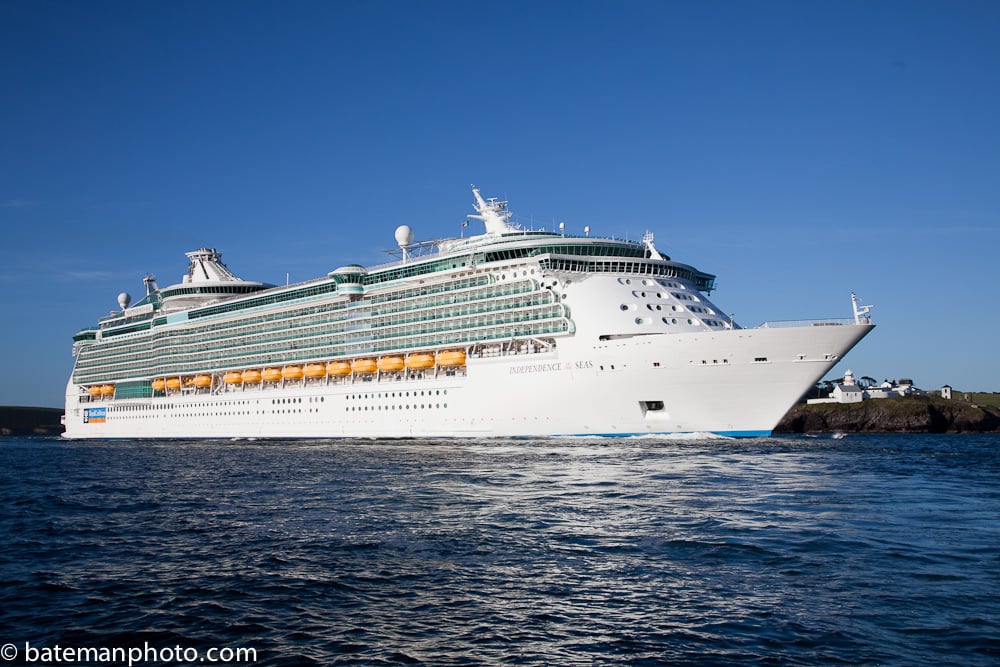
Cobh Peoples Regatta Starts at the Promenade
Cobh People Regatta for all classes will be held this Sunday afternoon (15th of August). There'll be a first gun at 14:00 hrs and the start area is Cobh Promenade. A prizegiving afterwards will be held at Trade Winds restaurant. More details HERE and the notice of Race is attached below.




























